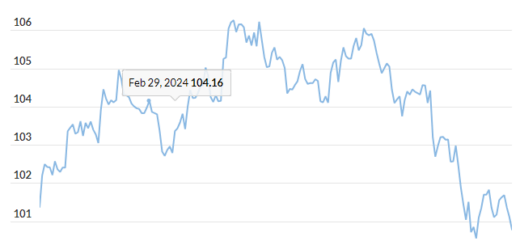S&P 500 vs. Russell 2000 Showdown: The Long-Lasting Dominance Unveiled
The dominance of large-cap stocks over small-caps and midcaps is underscored by the prevailing “winner-take-all” economy, despite the Russell 2000 index’s 17% gain in 2023. Small-cap and midcap stocks, although seemingly undervalued compared to a year ago, present a deceptive picture.

However, this appearance conceals two crucial factors. Firstly, the iShares P/E calculation, focusing solely on profitable companies, downplays the true P/E ratio. Factoring in unprofitable companies, the Russell 2000’s P/E, reported by Birinyi Associates, is 27.1—more than double the 11.8 reported by iShares.
Secondly, despite a robust 2023 economy, the average Russell 2000 company reported lower earnings than the previous year, with nearly 800 companies facing losses in the past 12 months.
The diminishing slice of the earnings pie for smaller companies is the second reason to question their perceived affordability. Research by Kathleen Kahle and Rene Stulz reveals a rising concentration of income among the top 100 most-profitable U.S. publicly-traded firms, increasing from 48.5% in 1975 to 84.2% in 2015.
This shift toward a “winner-take-all” economy aligns with the theory proposed by Thomas Noe and Geoffrey Parker, predicting industry dominance by larger corporations due to network effects in the internet economy.
Over the last five years, the Russell 2000 has consistently lagged behind the S&P 500 by 5.9 annualized percentage points. If the economy continues its trajectory towards an extreme “winner-take-all” phenomenon, it’s likely that the Russell 2000 will persistently trail, despite the ostensibly appealing low P/E ratios reported for smaller stocks.




